A villain, by definition, inspired hatred and rage. And while several authors have successfully brought us characters that fit this description perfectly over the years, many have struck a very artfully delicate balance by creating villains of intricate, conflicting complexity. Villains that, despite horrifying us with their gruesome villainy, also managed to inexplicably reach into our hearts and inspire sympathy.
Here are 16 literary antagonists that did not fail to horrify in the least, but somehow also never stopped being human and thus, thoroughly deserving of our understanding.
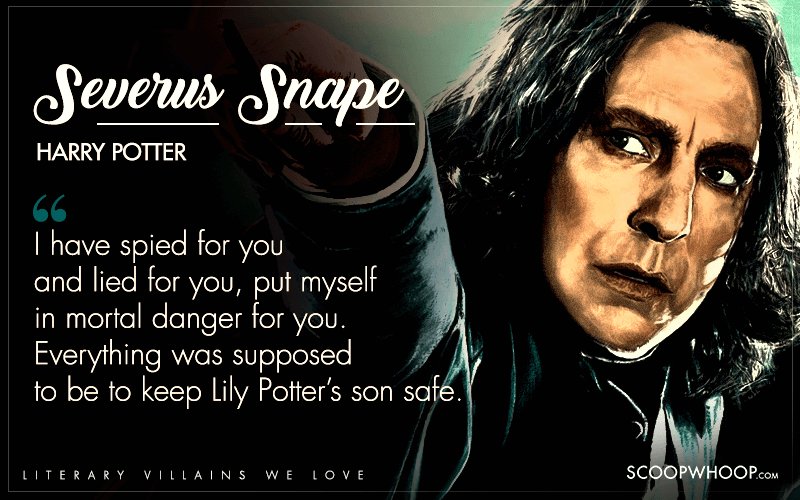
Snape is one of the most morally ambiguous characters in the Harry Potter universe. Despite the nefarious lengths he goes to to make Harry’s life a living hell, one cannot get themselves to forget that he too was mistreated as a boy at Hogwarts, and had his heart broken by Lily.
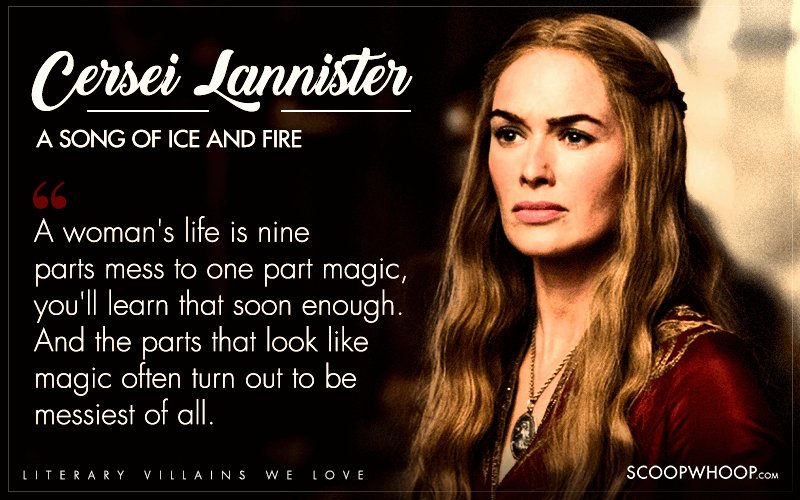
Sure, she’s an incestuous, manipulative, murderous monster for the most part – but how often do you find yourself really blaming her for any of it? The fact is that her passionate resolve to protect the ones she loves and her fierce refusal to let anyone dictate the terms of her life, in a way leave her seeming more human than one would expect.
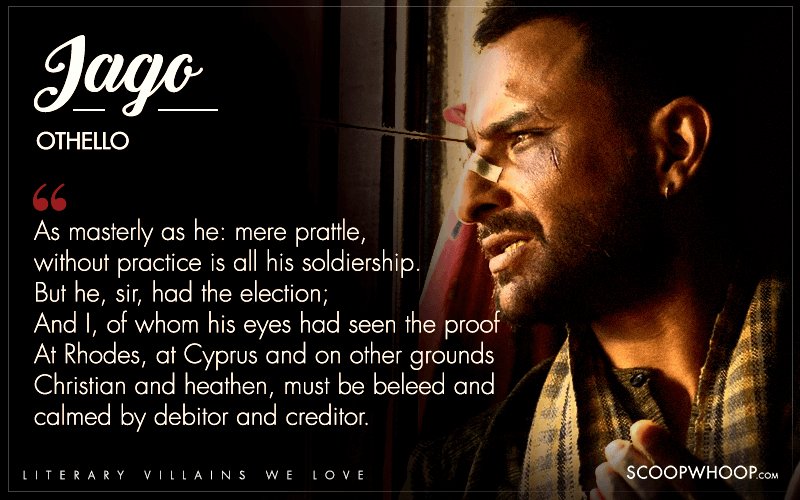
Iago destroyed Othello’s life, and it was all by design. But as horrible as his actions may have been, it’s hard for the reader to completely forget the jilted second-in-command denied his dues that Iago was. A defeated man driven to vengeful rage by the green-eyed monster.
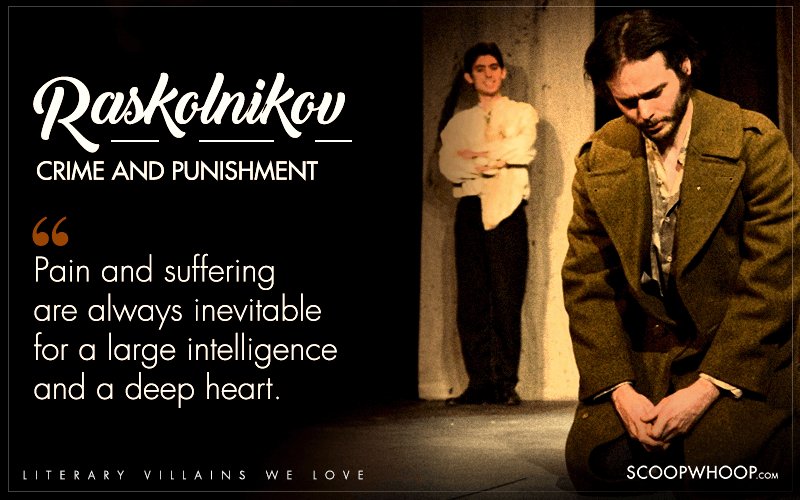
Dostoevsy had a knack for writing deplorable men and he does an exceptional job with Raskolnikov. This megalomaniacal anti-hero’s true belief that he is extraordinary is what brings about the complete undoing of his self by his own crimes. And thus, his shattering downfall does unavoidably inspire sympathy from us readers.
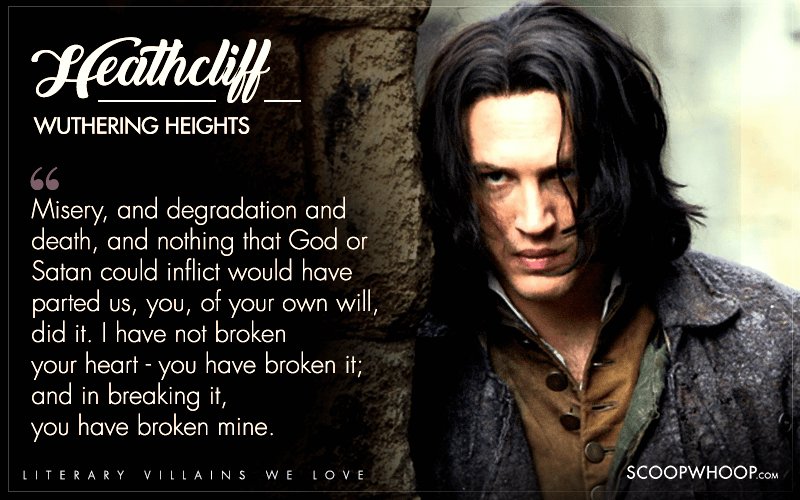
Besides the fact that his adult years were entrenched in spite and vengeance, Heathcliff is a romantic hero. His childhood misfortunes and abuses and his torturous love for Catherine make him uneasily, but inevitably deserving of our sympathy.
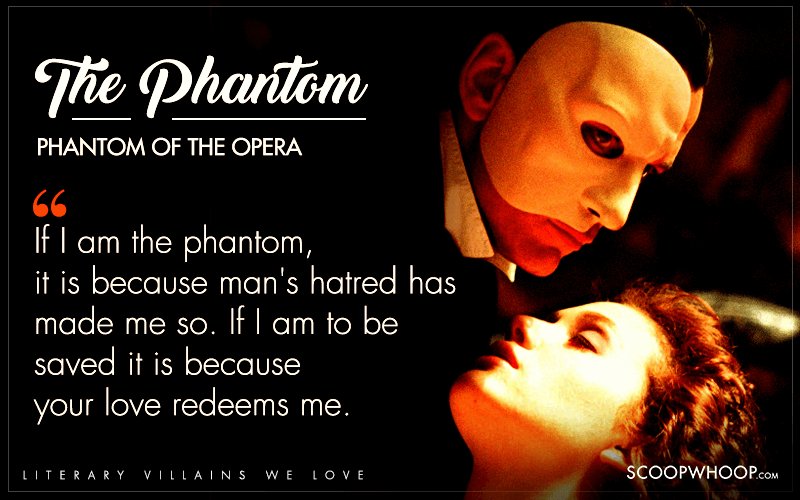
A wretched creature, disfigured and deformed, Erik or the Phantom is abused as a freak show attraction. Not only this, his tragically unrequited love for Christine makes the most heinous of his crimes almost understandable to the reader.
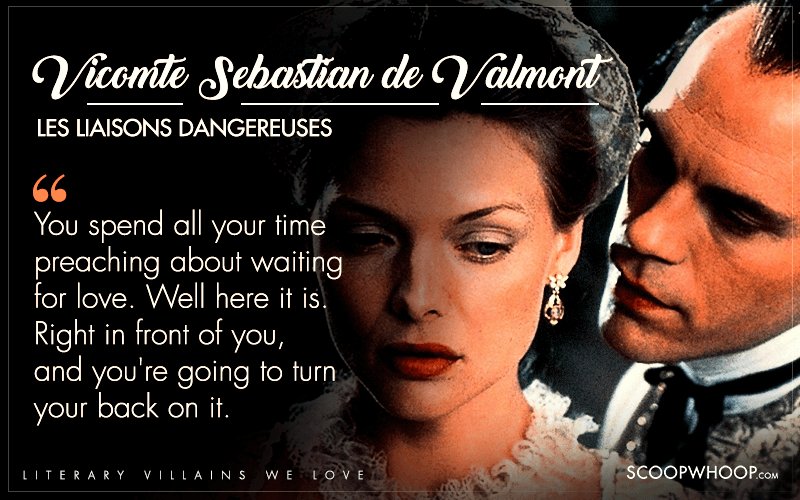
Vicomte Sebastian de Valmont is an impressive example of elegance being the only acceptable excuse for complete lack of character. At the end of his ruthless game of seducing women in order to publicly shame them, he dies in a duel, hopelessly in love with one of the women he destroyed. And we forgive him.
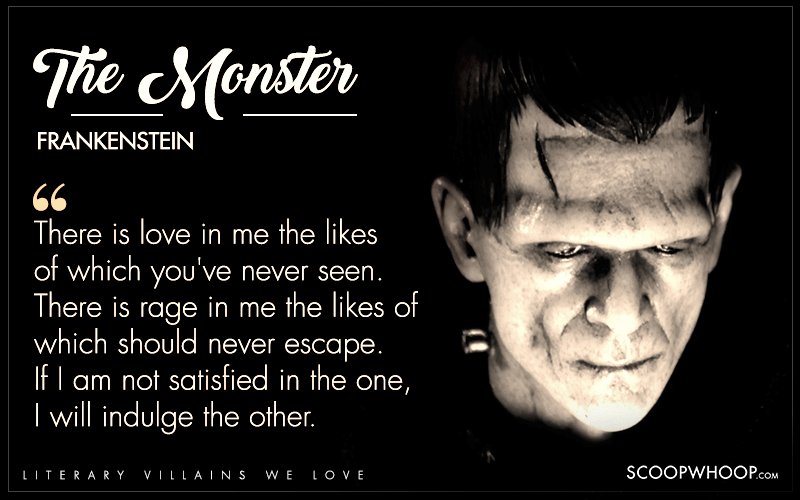
Shunned by society for his physical grotesqueness, the monster may have committed horrible crimes, but they stem from a place of innocence and heartbreak. The reader is painfully aware, regardless of all the murder and cruelty, of his deep desire for acceptance and companionship, which makes him hard to hate.
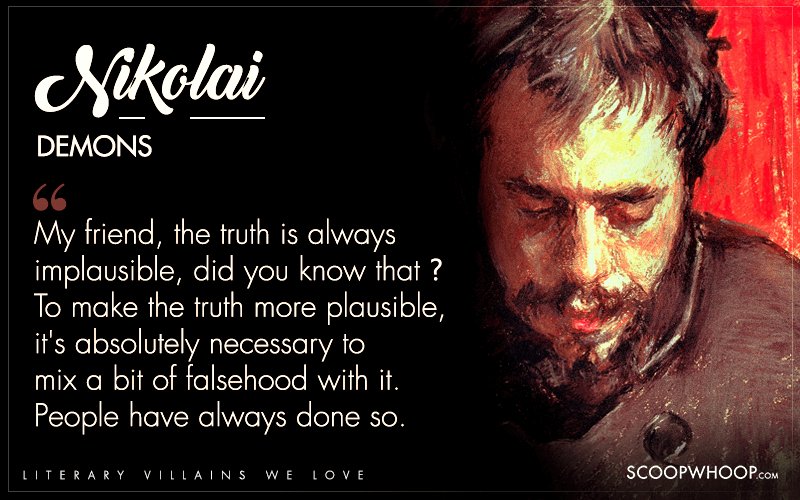
Rich, good-looking and evil-as-ever, Nikolai’s curiosity and his ability to influence others combine to make him a cold, merciless observer of his manipulations and their results. But for all his heartlessness, he remains a pitiable child, one that is confused and lonely, torn between impulse and indifference, one that does pull at your heart’s strings.
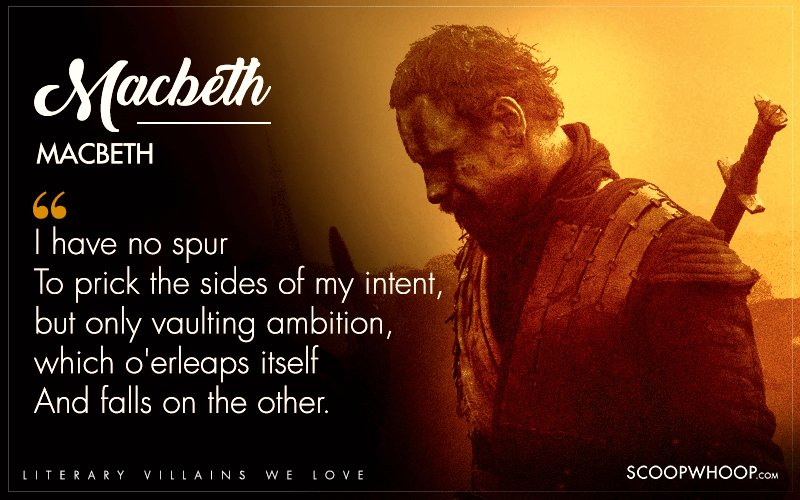
Introduced as a fearless warrior hero, Macbeth evolves during the play into a villain driven by his manliness and ambition. His excessive pride characterises him, but the great warrior that he is, he is glaringly ill-equipped for the psychological consequences of his crime and this marks him out for his final, tragic fall.
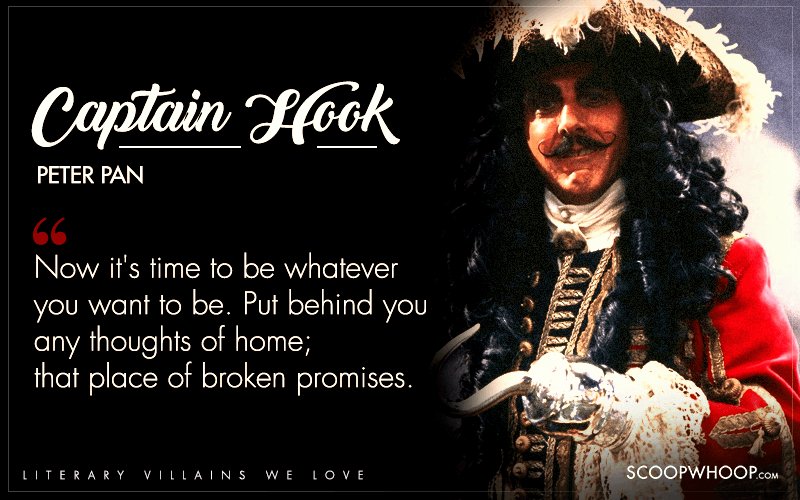
While he is painted as a classic storybook villai – evil, hairy, merciless and cruel even to his own crew – for the most part, Captain Hook makes you wonder if perhaps he wasn’t always the vicious pirate that he is now. His love for piracy and senseless violence is tempered by a nostalgia for simple ordinary propriety, for a sense of belonging in conventional society. Like the Darling children and the lost boys, he secretly longs to return to the real world, dreary as it may be.
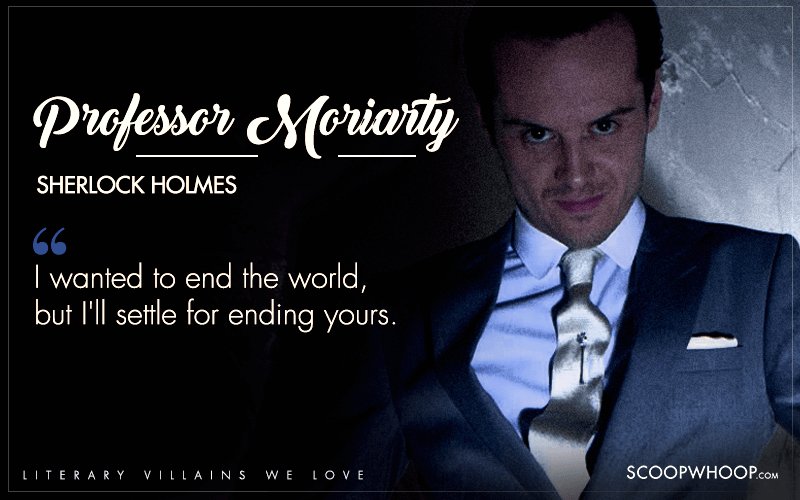
A classic narcissistic, highly intelligent, anti-social and manipulative character, Moriarty is truly one of the most viciously formidable of villains in recent pop culture. And even though he drips with indifference, and even joy sometimes, in others’ pain, Moriarty mirrors a lot of Sherlock’s traits – thus forcing the reader to question just why we hate him for being the way he is.

How can a cannibalistic serial killer be on this list, you ask? Let me explain. Not only are his charm, intellect, sophistication and his aversion to bad manners strangely attractive, but as a child, he was witness to the kind of trauma that can alter a person’s psychological landscape entirely. This PTSD primarily forms the core of Hannibal’s character, and it certainly feels worthy of our understanding, if not sympathy.
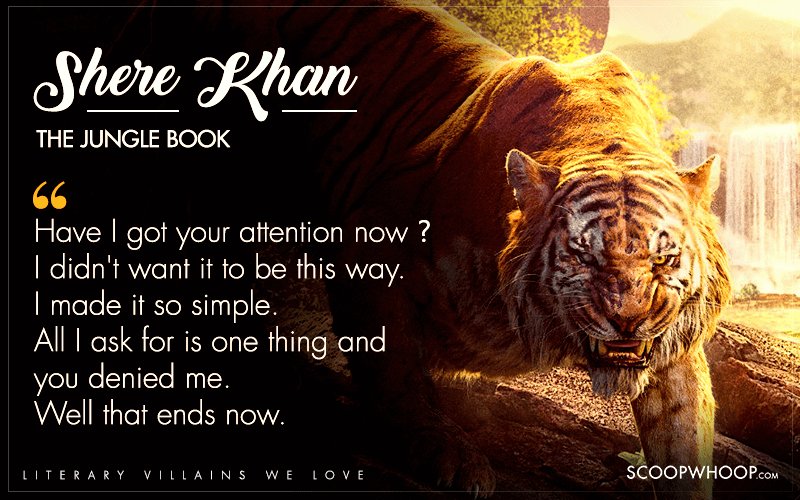
Shere Khan is aggressive, predatory and wildly disrespectful of Jungle laws, but it may not be far-fetched to assume that most of his negativity comes from the way that once being violently shackled left him – with a permanent limp, and therefore only a ghost of the formidable creature he was always destined to be. He tries hard to be scary and play politics, but fails pitiably, for despite all his brawn, he is outsmarted by the good guy.
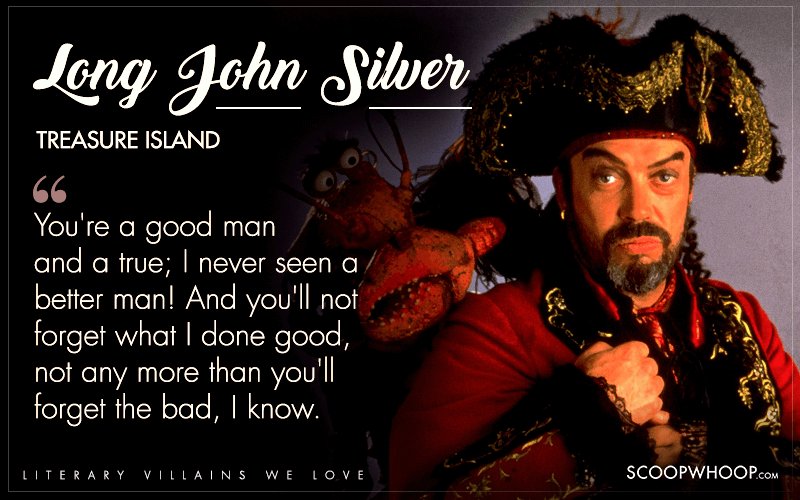
The grand-daddy of all vicious pirates in pop culture, Long John Silver is terrifying and tough all the way and the manipulative bastard somehow always slipped consequences. But what draws the reader’s heart out is the thoroughly protective father-figure he is to Jim – our hero. His murderous plans aside, he is presented as the man who had his back no matter what and we loved him for it.
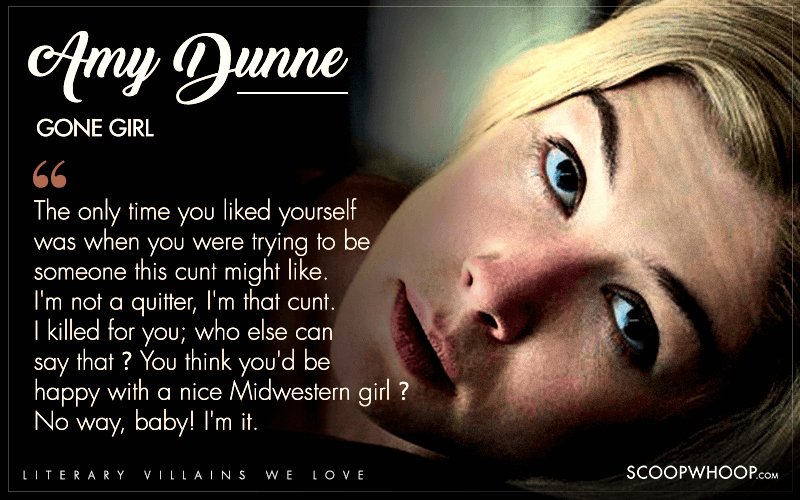
One of the most vicious of the villains on this list, Amy Dunne’s pathological brand of merciless, beyond-meticulous and remorse-free punishment fucked her husband’s life up pretty much in the worst ways imaginable. And yet, alienated since childhood and scorned irreparably as a woman, her unforgiving wrath takes devilish forms – and we strangely find ourselves supporting her.
These villains, the masterpieces that they were, stayed with us long after the book was read. And even as we shook in our boots, we don’t regret one bit of the love we felt for them.
Formidable designs by Nishant Patel

















